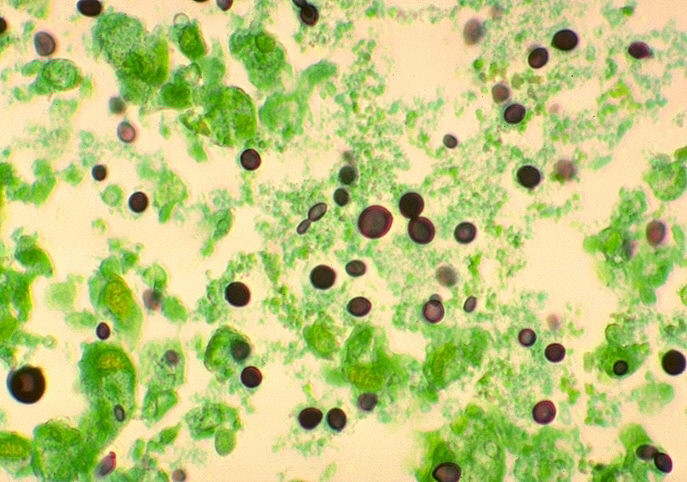

Minimal equipment and materials are required.There are various advantages of using India ink staining, including: Negative control: The absence of encapsulated yeasts was observed. Positive control: the presence of encapsulated yeasts was observed.

Figure 1: figure shows the capsule of cryptococcus (Bal et al., 2014) Look for oval or round cells that are irregular in size, measuring 2-10 m in diameter, and are surrounded by a large unstained capsule. Examine the preparation using the 40 X objective under a microscope. a drop of sediment and a drop of India ink. Transfer an equal amount of sediment and India ink to a slide, i.e.Remove the supernatant fluid and combine it with the sediment.CSF should be centrifuged for 5 to 10 minutes.Candida albicans used for negative control.Cryptococcus neoformans (for positive control).
CRYPTOCOCCUS NEOFORMANS INDIA INK FREE

17 Requirements for India Ink Preparation India Ink Compositionĭeionized Water, Thimerosal and Black Pelican Drawing Ink No. As a result, the capsule appears as a clear halo around the yeast cells. Because the capsule is non-ionic, the India ink used will not bind to it. Because the carbon black particles do not penetrate the microbe, it remains unstained and visible under the microscope. The India ink stain is made up of microscopic, opaque carbon black particles floating in an aqueous solution. The India ink staining technique is based on the negative staining principle, which states that the dye is used to stain the background while the microbe remains unstained, resulting in a clear image against a dark background. India ink is used as a negative stain in ion-negative staining, which allows visualization of the normally transparent and unstainable capsules of various microorganisms such as Cryptococcus neoformans (most commonly), Klebsiella pneumoniae, Streptococcus pneumoniae, and others. cell count or examining a Gram smear, or when India ink preparation for encapsulated yeasts is examined. We will explore the principle, technique, benefits, restrictions, comparison with other stains, and quality control of India ink staining in this article.Ĭryptococcal meningitis occurs in immunocompromised patients and when meningitis is clinically suspected, such as in HIV patients, or when yeast cells with lymphocytes are detected when performing a C.S.F.
CRYPTOCOCCUS NEOFORMANS INDIA INK PATCH
The dye is used to stain the background in this staining process, while the microbe shows as a clear patch against the dark background. India ink staining, also known as negative staining, is a simple yet effective approach for visualizing the exterior structures of bacteria, fungi, and other microbes in microbiology.


 0 kommentar(er)
0 kommentar(er)
